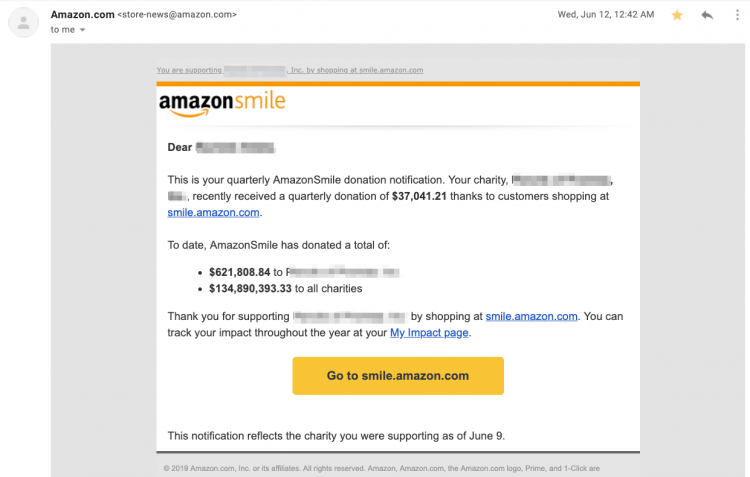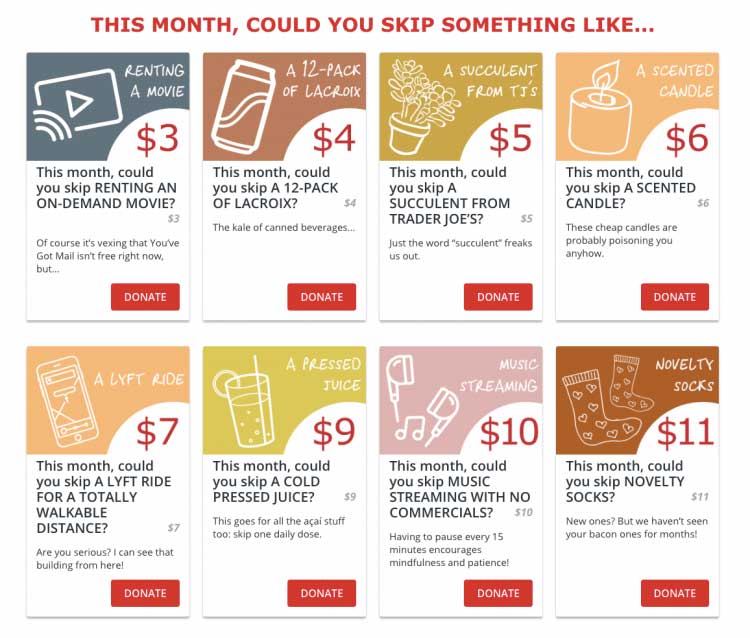Why Small Donations Are Worth More Than You Think

If you’ve ever been involved in fundraising, you’re likely familiar with the truth behind the phrase, “Every penny counts.” Whether you’re $5 or $50,000 away from your goal, all gifts have an impact that go far beyond the donation amount because each gift from a new donor represents exactly that, a new donor. Each of those individuals has the potential to be a lifelong supporter, champion your cause, and become a powerhouse fundraiser for your nonprofit.
When you consider smaller gifts specifically, there are a few recent industry trends that prove how important small donation donors are to the health and sustainability of your organization. With that, we’ll share a few tips and examples on how to attract these donations, even if smaller, so that you’re not leaving any money (or donors) on the table.
The Importance of a Diversified Fundraising Strategy
When it comes to your donor acquisition strategy, it’s logical to prioritize high net worth donors, whose contributions can have a large impact your annual budget. However, a sustainable, diversified fundraising strategy focuses on both the donors who give large annual donations and the recurring donor who commits to donate $5 a month.
When you create a diversified strategy where your nonprofit isn’t relying too heavily on just one source of revenue—whether that’s one annual event or one $100,000 donation—you are mitigating the risk that such a huge potential loss can have on your organization.
Read Next: 8 Ways to Diversify Your Fundraising Strategy
Giving by Individuals, Online Giving Declined
In 2018, giving by individuals declined by 1.1%, and this was also the first time in 50 years that giving by individuals comprised less than 70% of overall giving, according to Giving USA 2019. Even though giving by individuals represents the majority of gifts made in 2018, with $292.09 billion (or 68%) of donations coming from individual donors, 2018 was the first time that percentage declined year over year.
When it comes to online fundraising, online revenue for nonprofits only grew by 1%, according to M+R Benchmarks. This was the first time in 13 years that the average revenue growth was in the single digits. This is even more striking when compared to the 23% year-over-year growth in 2017.
Both of these findings are small decreases and by no means reason for panic, but if the reasons that fewer people donated in 2018 continue to exist, or even compound, then wouldn’t you rather have a bigger pool of donors to begin with?
There’s an Influx of Younger Donors
Generation Z, also known as “Philanthroteens,” are the upcoming generation of donors, and while they are on track to be the most socially conscious generation to date—32 percent of Gen Z donate their own money and 26 percent of 16 to 19-year-olds volunteer on a regular basis—they also are not in a position to donate large sums of money. Instead, this cohort is engaging through small donations, volunteering, and becoming peer-to-peer fundraisers.
All forms of support are impactful, but peer-to-peer fundraisers are particularly so, as Classy’s State of Modern Philanthropy: Examining Online Fundraising Trends has found peer-to-peer fundraisers typically raise 3 to 4 times more than what the typical donor would give.
This is meaningful for nonprofits because younger generations, who are likely to give smaller amounts of money, will make up a large portion of individual givers, especially considering Generation Z will boast 2.6 billion individuals by 2020. Make sure that you are not alienating this donor segment by ignoring their $5 gift, or failing to give them the same level of attention as you would a donor who gave $500.
The Value of a Donor Goes Beyond the Initial Donation
Typical return donors—those who come back to engage with an organization after their first gift—will make a second donation 349 days after making their first donation, which is close to the one-year-anniversary date. But before you put Donny-the-$5-donor into one bucket, consider that 19% of return donors re-engage with nonprofits within the first three months after making their gift, according to The State of Modern Philanthropy: Trends in Return Donor Behavior.
There is a great opportunity to reach out to your first-time donors much sooner than the one-year mark to get them to re-engage.
Another exciting finding is that people willing to become recurring givers are more likely to do so soon after they first make a gift. The median amount of time is just 214 days from the first donation until someone activates a recurring giving plan. That is 4.5 months sooner than those who come back to make another one-time donation.
So while someone may only give a small donation at first, their potential impact, in the long run, is immeasurable.
Tips When Asking for Small Donations
Given the power of small donations, use the following three tips to attract them and leverage their impact.
1. Use a fixed amount to demonstrate the impact a small donation can make.
Explicitly explain what a certain amount will fund. This 20-second video by BlinkNow, for instance, demonstrates the impact that a monthly $5 donation can make on its mission. In addition to including photos from the field, the short video includes a call to action: “One monthly coffee can have the power to make a difference that will last a lifetime.”
Free Download: Guide to Nonprofit Storytelling
2. Take advantage of third-party programs that allow donors to give a small percentage of their transaction to your organization.
The best part about these browser plug-ins or smartphone apps is that they make it as convenient as possible for your donor to give. These very small donations, sometimes a mere penny at a time, add up, as you can see below:

3. Use small amounts to acquire new recurring donors.
Love 146 created a monthly giving campaign that centered around the impact of small, manageable monthly donations. Similar to Blink Now, the campaign featured a list of slight sacrifices, like foregoing one case of La Croix or a pair of novelty socks, along with lighthearted descriptions of why the donor doesn’t really need that item anyway.

Before listing the different levels of giving, they share this powerful statement that helps put things into perspective:
A lot of our favorite things are simple and small—but could we give them up every once in a while to make room for children affected by trafficking?
This clever tactic put a lighthearted spin on a serious mission while showing how a small donation can make a great impact.
Are You Ready to Tap Into Small Donations?
We often hear about segmenting our donor base and bucketing appeals based on a myriad of characteristics, and one of those is usually donation amount. While this can be helpful in certain situations (you shouldn’t direct someone who previously gave $20 to a campaign page with suggested donation amounts of $500 and up), donors are worth more than their donation amount.
Make sure your team sends all donors a thank you, thorough stewardship communications, and opportunities to donate again, no matter the amount of their first gift.

Build Your Annual Fundraising Strategy Kit



